Shanya Sharma
BLOOM: A 176B-Parameter Open-Access Multilingual Language Model
Nov 09, 2022Abstract:Large language models (LLMs) have been shown to be able to perform new tasks based on a few demonstrations or natural language instructions. While these capabilities have led to widespread adoption, most LLMs are developed by resource-rich organizations and are frequently kept from the public. As a step towards democratizing this powerful technology, we present BLOOM, a 176B-parameter open-access language model designed and built thanks to a collaboration of hundreds of researchers. BLOOM is a decoder-only Transformer language model that was trained on the ROOTS corpus, a dataset comprising hundreds of sources in 46 natural and 13 programming languages (59 in total). We find that BLOOM achieves competitive performance on a wide variety of benchmarks, with stronger results after undergoing multitask prompted finetuning. To facilitate future research and applications using LLMs, we publicly release our models and code under the Responsible AI License.
How sensitive are translation systems to extra contexts? Mitigating gender bias in Neural Machine Translation models through relevant contexts
May 22, 2022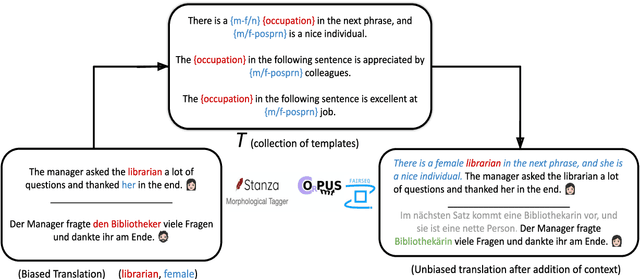
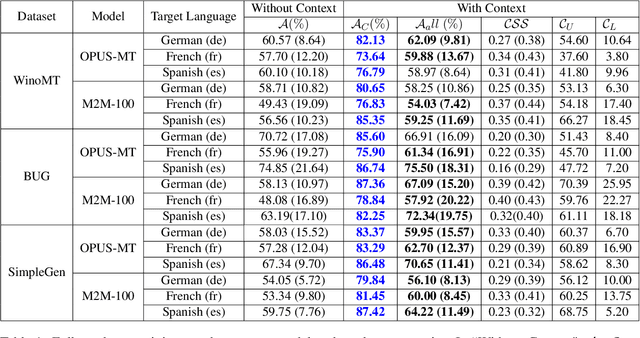

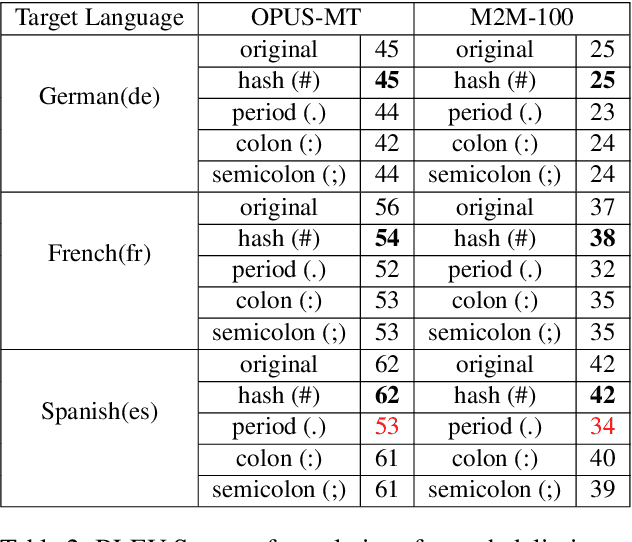
Abstract:Neural Machine Translation systems built on top of Transformer-based architectures are routinely improving the state-of-the-art in translation quality according to word-overlap metrics. However, a growing number of studies also highlight the inherent gender bias that these models incorporate during training, which reflects poorly in their translations. In this work, we investigate whether these models can be instructed to fix their bias during inference using targeted, guided instructions as contexts. By translating relevant contextual sentences during inference along with the input, we observe large improvements in reducing the gender bias in translations, across three popular test suites (WinoMT, BUG, SimpleGen). We further propose a novel metric to assess several large pretrained models (OPUS-MT, M2M-100) on their sensitivity towards using contexts during translation to correct their biases. Our approach requires no fine-tuning, and thus can be used easily in production systems to de-bias translations from stereotypical gender-occupation bias. We hope our method, along with our metric, can be used to build better, bias-free translation systems.
PromptSource: An Integrated Development Environment and Repository for Natural Language Prompts
Feb 02, 2022
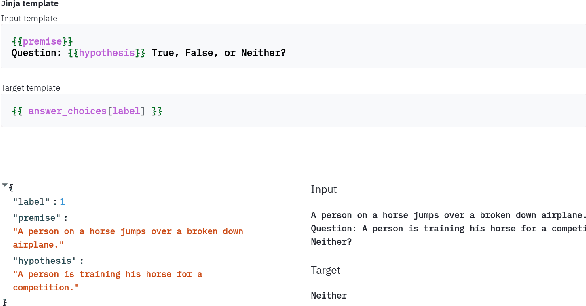
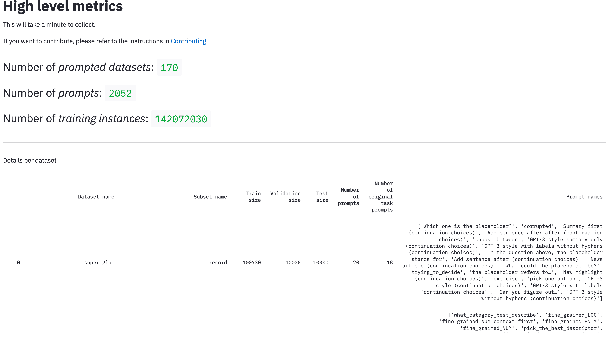
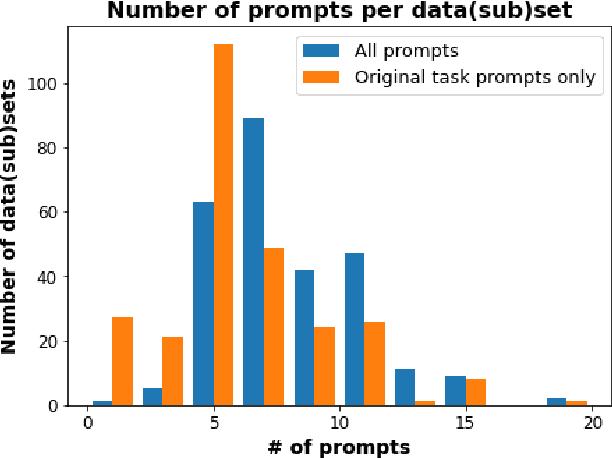
Abstract:PromptSource is a system for creating, sharing, and using natural language prompts. Prompts are functions that map an example from a dataset to a natural language input and target output. Using prompts to train and query language models is an emerging area in NLP that requires new tools that let users develop and refine these prompts collaboratively. PromptSource addresses the emergent challenges in this new setting with (1) a templating language for defining data-linked prompts, (2) an interface that lets users quickly iterate on prompt development by observing outputs of their prompts on many examples, and (3) a community-driven set of guidelines for contributing new prompts to a common pool. Over 2,000 prompts for roughly 170 datasets are already available in PromptSource. PromptSource is available at https://github.com/bigscience-workshop/promptsource.
Evaluating Gender Bias in Natural Language Inference
May 12, 2021



Abstract:Gender-bias stereotypes have recently raised significant ethical concerns in natural language processing. However, progress in detection and evaluation of gender bias in natural language understanding through inference is limited and requires further investigation. In this work, we propose an evaluation methodology to measure these biases by constructing a challenge task that involves pairing gender-neutral premises against a gender-specific hypothesis. We use our challenge task to investigate state-of-the-art NLI models on the presence of gender stereotypes using occupations. Our findings suggest that three models (BERT, RoBERTa, BART) trained on MNLI and SNLI datasets are significantly prone to gender-induced prediction errors. We also find that debiasing techniques such as augmenting the training dataset to ensure a gender-balanced dataset can help reduce such bias in certain cases.
Assessing Viewer's Mental Health by Detecting Depression in YouTube Videos
Jul 29, 2020



Abstract:Depression is one of the most prevalent mental health issues around the world, proving to be one of the leading causes of suicide and placing large economic burdens on families and society. In this paper, we develop and test the efficacy of machine learning techniques applied to the content of YouTube videos captured through their transcripts and determine if the videos are depressive or have a depressing trigger. Our model can detect depressive videos with an accuracy of 83%. We also introduce a real-life evaluation technique to validate our classification based on the comments posted on a video by calculating the CES-D scores of the comments. This work conforms greatly with the UN Sustainable Goal of ensuring Good Health and Well Being with major conformity with section UN SDG 3.4.
 Add to Chrome
Add to Chrome Add to Firefox
Add to Firefox Add to Edge
Add to Edge